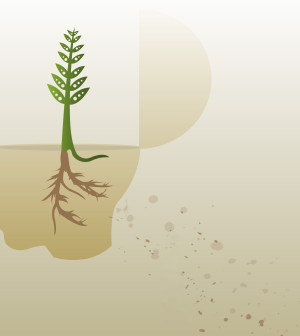- Skip Storing This Everyday Product in the Fridge Door
- Green Tea + B3 Pairing May Boost Brain Health
- Navigating Your Midlife Crisis: Embracing New Possibilities
- City Raccoons Showing Signs of Domestication
- Mapping the Exposome: Science Broadens Focus to Environmental Disease Triggers
- One Week Less on Social Media Linked to Better Mental Health
- Your Brain Changes in Stages as You Age, Study Finds
- Some Suicide Victims Show No Typical Warning Signs, Study Finds
- ByHeart Formula Faces Lawsuits After Babies Sickened With Botulism
- Switch to Vegan Diet Could Cut Your Greenhouse Gas Emissions in Half
Magnetic Brain Stimulation Offers Promise for Stroke Victims: Study

Stimulating the unaffected side of a stroke patient’s brain might one day help restore arm movement, according to a new study.
After a severe stroke, many patients have little or no movement in the arm on the stroke-affected side of their body. Little can be done now to help them.
This study of 30 stroke patients found that transcranial magnetic stimulation of the undamaged side of the brain can affect arm movements. The results suggest that this noninvasive therapy, which uses a magnet to increase activity in a specific region of the brain, could help patients regain some use of stroke-affected arms.
“Little research has looked at this severely impaired population — most is aimed at improving relatively mild movement impairments — and, as a consequence, no validated treatment is available to help those with the most severe disabilities,” said study co-author Rachael Harrington, a fourth-year Ph.D. student in the Interdisciplinary Program in Neuroscience at Georgetown University Medical Center.
The therapy had a smaller effect in patients with more mild arm impairment, suggesting this approach might offer a unique recovery option for those with more severe disability, according to the researchers.
Further studies will determine whether repeated stimulation of the unaffected side of the brain can help “teach it” to control the disabled arm. “Stimulating this area repeatedly may force the brain to use this latent area — neurons that fire together wire together,” Harrington said in a center news release.
“These findings offer promise that these patients may be able to gain function, independence and a better quality of life,” she concluded.
Currently, transcranial magnetic stimulation is approved by the U.S. Food and Drug Administration only for drug-resistant depression. However, the therapy is being tested as a treatment for a number of brain disorders.
The findings were presented Oct. 20 at the annual meeting of the Society for Neuroscience in Chicago. Findings presented at medical meetings are considered preliminary, because they are not subjected to the same rigorous peer review as research published in journals.
More information
The U.S. National Institute of Neurological Disorders and Stroke has more about stroke rehabilitation.
Source: HealthDay
Copyright © 2025 HealthDay. All rights reserved.










